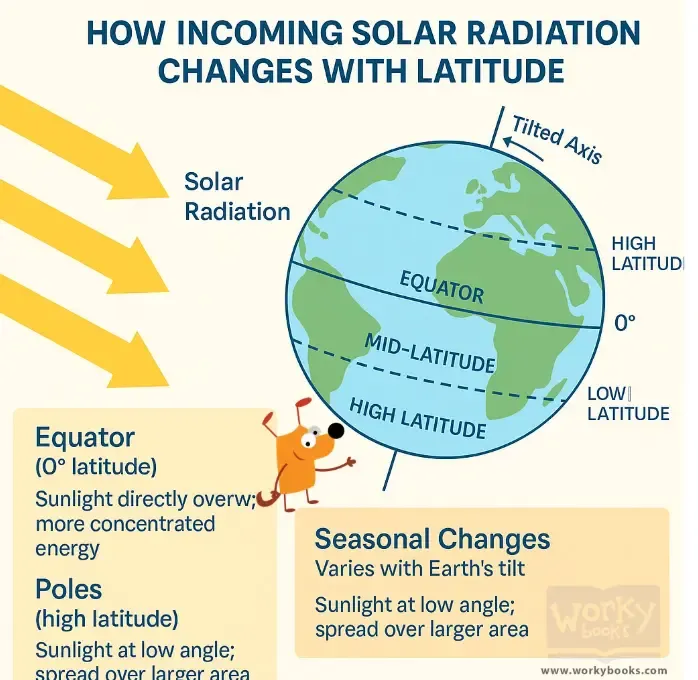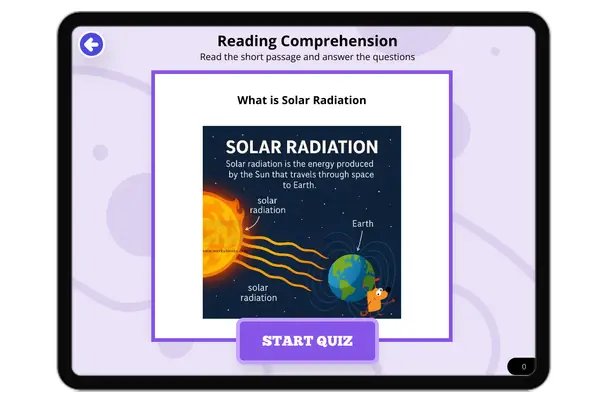How Incoming Solar Radiation Changes with Latitude — Reading Comprehension
Premium Resource
Grades
- 3
- 4
- 5
- 6
- 7
Standards
- MS-ESS1-1
PRINT+DIGITAL RESOURCE
This learning resource is available in interactive and printable formats. The interactive worksheet can be played online and assigned to students. The Printable PDF version can be downloaded and printed for completion by hand.
About This Reader
This NGSS-aligned science reading passage helps middle school students understand how solar radiation, or insolation, changes with latitude. It explains why areas near the equator receive more direct sunlight while regions near the poles receive less, due to the angle of the Sun’s rays. The passage also explores how Earth's tilt causes seasonal differences in sunlight and temperature. These variations help explain climate zones and the differences in weather and ecosystems across the globe. The passage supports science reading comprehension and includes essential vocabulary like latitude, insolation, equator, and greenhouse effect. It is ideal for lessons on Earth’s energy system, seasons, and climate under NGSS Earth and Space Science standards.
Perfect For:
👩🏫 Teachers
- • Reading comprehension practice
- • Auto-graded assessments
- • Literacy skill development
👨👩👧👦 Parents
- • Reading practice at home
- • Comprehension improvement
- • Educational reading time
🏠 Homeschoolers
- • Reading curriculum support
- • Independent reading practice
- • Progress monitoring
Reading Features:
📖
Reading Passage
Engaging fiction or nonfiction text
❓
Comprehension Quiz
Auto-graded questions
📊
Instant Feedback
Immediate results and scoring
📄
Printable Version
Download for offline reading
🔊
Read Aloud
Voice-over with word highlighting



